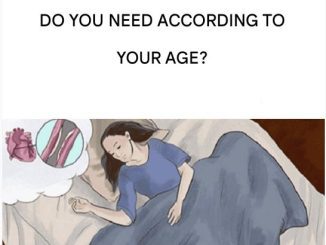A painful, bony bump on the side of your foot can disrupt your life in surprising ways. It makes wearing your favorite shoes a challenge and walking comfortably nearly impossible. If you’ve noticed a bump forming near your big toe, you’re likely dealing with a bunion. Don’t worry; we’re here to guide you through the causes, symptoms, and the best ways to treat and prevent bunions, so you can get back to living pain-free.
What is a Bunion?

A bunion, medically known as hallux valgus, is a bony protrusion that forms at the base of the big toe joint. This occurs when the big toe leans inward, pressing against the neighboring toes and pushing the joint outward. Over time, this misalignment leads to a visible bump on the side of the foot, causing discomfort, pain, and even arthritis in the affected joint.
Several factors can contribute to the development of bunions, from genetics to wearing tight shoes. Without treatment, they can progressively worsen, affecting your mobility and causing chronic pain.
Signs and Symptoms of Bunions
Identifying a bunion early can make a difference in how effectively you can manage it. Here are the most common signs and symptoms to watch for:
- A visible bump on the side of your foot at the base of the big toe
- Persistent pain or tenderness around the joint
- Swelling and redness near the bunion
- Restricted movement in the big toe, making it hard to flex or walk
- Corns or calluses where the toes rub together due to misalignment
- Thickened skin at the base of the big toe
If you experience any of these symptoms, you may have a bunion. But what causes this painful bump in the first place?
What Causes Bunions?
Bunions are typically the result of uneven pressure on the foot over time, which may stem from:
- Genetics: You may be more likely to develop bunions if they run in your family, as certain foot structures are hereditary.
- Footwear Choices: Shoes that are too tight, narrow, or high-heeled can put excessive pressure on the big toe joint, leading to a bunion over time.
- Arthritis: Conditions like rheumatoid arthritis can cause joint inflammation and instability, increasing the likelihood of bunion formation.
- Foot Injuries: Trauma to the foot, such as sprains or fractures, may sometimes lead to bunions as a long-term consequence.
- Flat Feet or Abnormal Walking Patterns: These issues contribute to uneven pressure distribution, which can make bunions more likely.
With bunions, prevention is key. But if you’re already experiencing symptoms, there are several treatments available to help manage and alleviate your pain.
How to Treat and Get Rid of Bunions
Although bunions cannot be reversed without surgery, there are numerous ways to relieve pain, slow progression, and improve your quality of life. Let’s take a look at the most effective treatment options:
1. Choose the Right Footwear

One of the best things you can do for your bunions is to invest in shoes that provide plenty of room for your toes. Look for footwear with:
- Wide toe boxes to let your toes lie flat and spread naturally
- Low or no heels to minimize pressure on the front of the foot
- Soft, cushioned insoles that absorb shock and provide comfort
Proper footwear can prevent further misalignment and help you avoid unnecessary pain.
2. Use Bunion Pads or Orthotics
Bunion pads or toe spacers offer extra cushioning for your bunion, reducing friction from shoes and minimizing discomfort. These over-the-counter products can make a significant difference, especially if you’re on your feet for extended periods.
Custom orthotics, recommended by a podiatrist, may also help if you need more substantial support. Orthotics correct improper foot mechanics and provide additional arch support, easing the pressure on the big toe joint.
3. Pain Management and Anti-Inflammatory Remedies

If you experience mild to moderate pain, over-the-counter pain relievers such as ibuprofen or acetaminophen can help reduce inflammation and provide relief. Another effective approach is applying an ice pack to the affected area for 10-15 minutes, which can help reduce swelling and numb the pain.
For localized pain relief, try using topical anti-inflammatory creams or gels on the bunion, especially during flare-ups.
4. Try Toe and Foot Exercises
Regular foot exercises can help maintain flexibility, strengthen muscles, and slow down the progression of bunions. Here are a few helpful exercises to try:
- Toe Stretches: Gently pull your big toe back into a natural alignment, holding it for 10 seconds. Repeat this several times each day.
- Towel Scrunches: Lay a towel on the floor, then use your toes to scrunch it up, which helps strengthen the muscles in your feet.
- Toe Circles: Rotate your big toe in circular motions to improve joint flexibility and reduce stiffness.
Incorporating these exercises into your routine can make a noticeable difference in your comfort level.
5. Use Bunion Splints

Bunion splints are worn at night to help align the big toe while you sleep. Although they won’t eliminate the bunion, they can offer temporary relief from pain and may even slow its progression.
6. Consider Corticosteroid Injections
For severe or persistent pain, a doctor may suggest corticosteroid injections. These can provide temporary relief by reducing inflammation. However, this option is generally recommended only when other treatments haven’t been effective.
7. Surgical Options (Bunionectomy)

In cases where bunions significantly impact your day-to-day activities, surgery might be the best course of action. A bunionectomy is a surgical procedure that realigns the bones, ligaments, and tendons of the foot to remove the bony bump. Different surgical techniques are available, depending on the severity of the bunion:
- Osteotomy: The surgeon cuts and realigns the bone to correct the big toe’s position.
- Exostectomy: Part of the bony bump is removed without realigning the bones, often performed alongside an osteotomy.
- Arthrodesis: For severe cases or arthritic bunions, the surgeon fuses the joint to prevent further pain and movement.
Recovery from bunion surgery may take several weeks to months and involves wearing a cast or surgical shoe, physical therapy, and a gradual return to normal activities. While surgery is effective, it’s typically considered a last resort due to its recovery time and potential risks.
Preventing Bunions Before They Start
While not all bunions can be prevented, especially if they’re genetic, you can reduce your risk by following these tips:
- Wear Shoes with a Wide Toe Box: Avoid high heels and choose footwear that allows your toes to move freely.
- Support Your Feet: If you have flat feet or other structural issues, consider using orthotics for improved foot mechanics.
- Take Breaks: If you’re on your feet often, take regular breaks to reduce strain on your toes.
- Maintain a Healthy Weight: Excess weight places extra pressure on your feet, which can exacerbate bunions.
Conclusion: Managing Bunions for a Better Quality of Life
Bunions may be a common foot issue, but they don’t have to control your life. By making smart footwear choices, incorporating targeted exercises, and seeking appropriate treatments, you can manage your symptoms and prevent bunions from worsening. And remember, early intervention is key—addressing the problem now can make all the difference in maintaining your mobility and comfort in the future.


